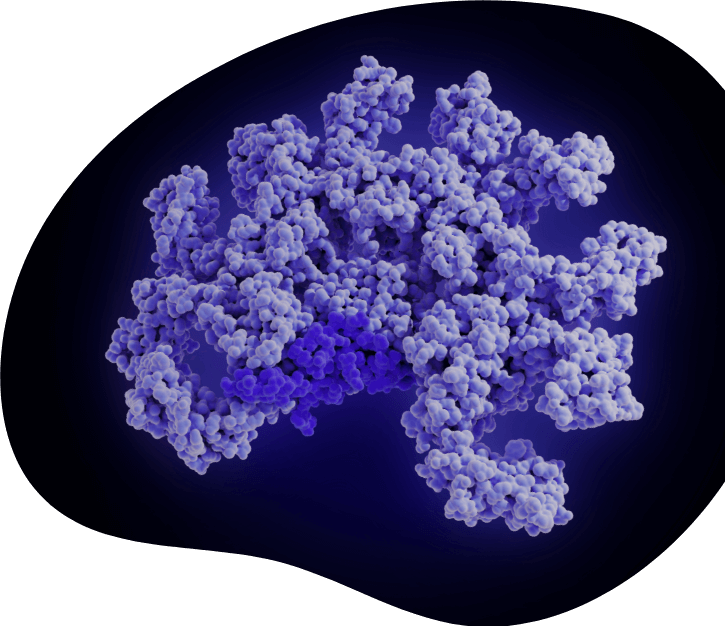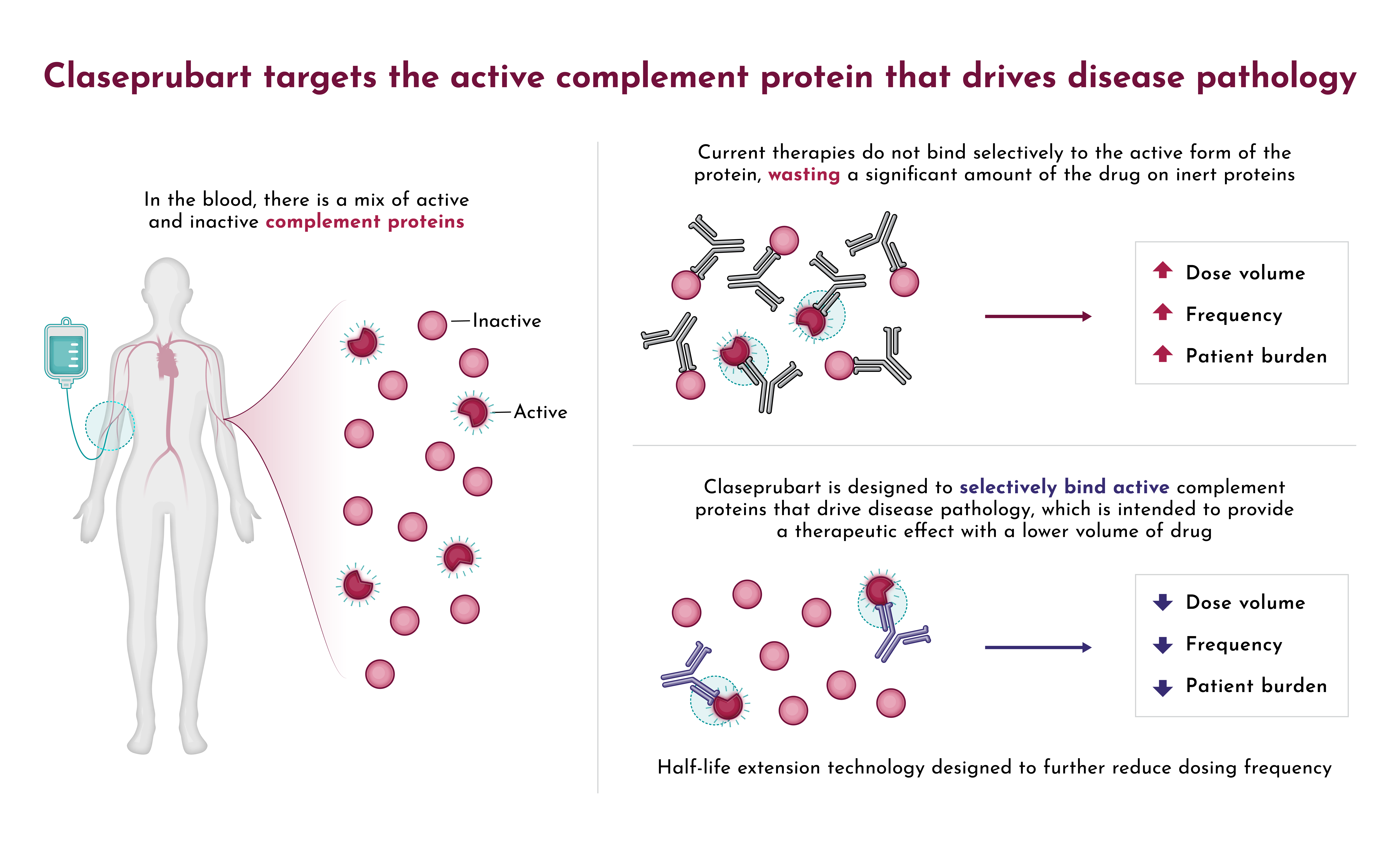

approach & pipeline
DEFINED TARGETS.
BOUNDLESS IMPACT.
Dianthus Therapeutics is harnessing the power of selectivity to advance next-generation complement therapies to treat severe autoimmune diseases.

OUR INNOVATION
Our lead antibody, claseprubart (DNTH103), is purposefully engineered with extended half-life, improved potency, and high selectivity for only the active C1s complement protein that drives disease pathology – enabling less frequent and more convenient self-administered subcutaneous injections.
Addressing both the disease and treatment burdens that disrupt the lives of patients.

OUR FOCUS
Claseprubart is an investigational, long-acting monoclonal antibody engineered to potently and selectively inhibit the active form of C1s, a clinically validated target in the classical complement pathway.
As the classical pathway plays a significant role in disease pathology across a range of neuromuscular disorders, claseprubart holds the potential to be a pipeline in a product – beginning with generalized Myasthenia Gravis (gMG), Multifocal Motor Neuropathy and Chronic Inflammatory Demyelinating Polyneuropathy.
Engineered with YTE half-life extension technology, claseprubart is intended to be the first subcutaneous complement therapy that can be self-administered as infrequently as once every two weeks for patients with severe, classical pathway-driven autoimmune disorders.
So patients can live healthier lives to their fullest potential.



BUILDING A NEUROMUSCULAR FRANCHISE WITH CLASEPRUBART (DNTH103)
Claseprubart is an investigational, clinical-stage, potent monoclonal antibody engineered to selectively target the classical pathway by inhibiting only the active form of the C1s protein, a clinically validated complement target. Claseprubart is enhanced with YTE half-life extension technology designed to enable a more convenient subcutaneous, infrequently dosed, self-administered injection. Additionally, selective inhibition of the classical complement pathway may lower patient risk of infection from encapsulated bacteria by preserving immune activity of the lectin and alternative pathways. As the classical pathway plays a significant role in disease pathology, claseprubart has the potential to be a best-in-class pipeline-in-a-product across a range of autoimmune disorders with high unmet need. Dianthus is building a neuromuscular franchise with claseprubart and expects to initiate a Phase 3 trial in gMG in 2026, the interim responder analysis of the Phase 3 CAPTIVATE trial in Chronic Inflammatory Demyelinating Polyneuropathy in 2H’26, and top-line data from the Phase 2 MoMeNtum trial in Multifocal Motor Neuropathy in 2H’26.
PIPELINE
Claseprubart – subcutaneous active C1s antibody
Ongoing Discovery




